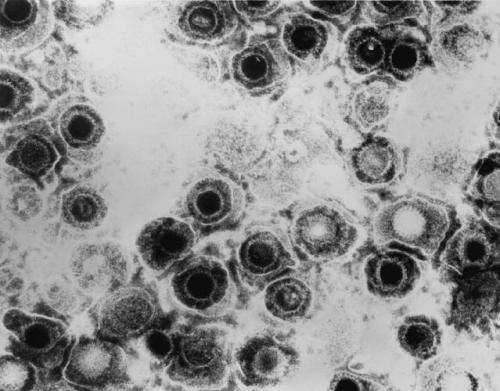'Key' to recognizing and immunizing herpes, common cold

Researchers at McMaster University have discovered a critical step in the immune system's recognition of DNA viruses. It's a key finding, they say, that could lead to vaccinations for herpes, the common cold or even cancer.
The study published today by the scientific journal Nature Immunology found that a protein, previously known to be involved in metabolism, is critical for the detection of the viruses. The co-authors are Brian Lichty and Yonghong Wan, both professors of pathology and molecular medicine for McMaster's Michael G. DeGroote School of Medicine.
This discovery is a significant advancement towards the development of vaccines for DNA viruses such as herpes and colds, says Lichty.
"We have identified an important step in the detection of DNA viruses by the immune system, and have shown that this is absolutely crucial in the response to a vaccine against these infections. If the key immune system component identified in these studies is not triggered, then vaccination fails."
Wan says this study could have further impact on a number of serious conditions and illnesses.
"This represents a breakthrough in our fundamental understanding of how our immune system detects a viral infection. But it goes beyond that, as this component of our immune system is also involved in detection of cancer by our immune system and is central to the development of autoimmune diseases," Wan said.
"So this discovery potentially impacts anyone infected by a virus, receiving a vaccination, fighting cancer or experiencing autoimmunity."
Prior to this study, it was known that interferon regulatory factor-3 (IRF-3), a protein coding gene, contributed to a first line of defense against viral infection by triggering antiviral activity. However the activation of IRF-3 following infection was not fully understood.
The study found that an interaction with the protein S6K1 and the signaling adaptor STING is a fundamental regulatory mechanism for IRF3 and, thus, helps trigger antiviral responses.
"Now that we have identified this aspect of the immune system, we can work on developing methods to engage this pathway during vaccination against viruses or cancer," said Lichty.
More information: S6K-STING interaction regulates cytosolic DNA–mediated activation of the transcription factor IRF3, DOI: 10.1038/ni.3433


















